Vietnamese Spring Rolls
on Feb 19, 2024, Updated Apr 13, 2025
This post may contain affiliate links. Please read our disclosure policy.
Light and crunchy, savory and addicting, these fried spring rolls are served wrapped in lettuce leaves with lots of fresh herbs, dipped in a fish sauce, and eaten out of hand.
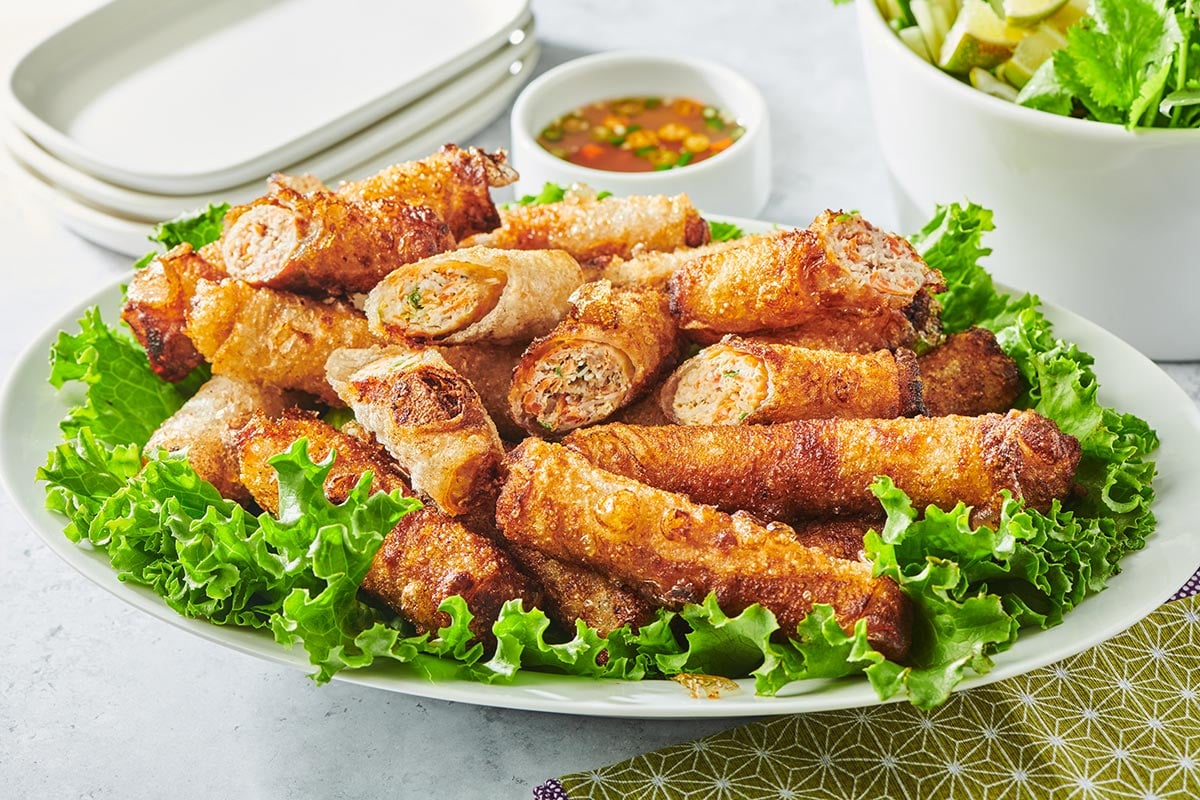
Light and crunchy, savory and addicting, these are well worth the time and effort. Fried Vietnamese spring rolls are traditionally served wrapped in lettuce leaves with lots of fresh herbs, served with Nuoc Mam or Nuoc Cham, a fish sauce-based dipping sauce. I have never seen anyone eat just one. I have never eaten less than 5.
My friend Catherine’s mom is Vietnamese, and I’ve been dreaming of the time we got to try her homemade spring rolls years ago. Catherine invited us over for a small Vietnamese feast prepared by her mom, known as Baba, to the family. They were nothing short of amazing. Baba was especially delighted with (then three-year-old) Charlie, who inhaled more than anyone else. The look of happiness on her face as this tiny child wrapped and dipped and ate spring rolls with ridiculous gusto was priceless.
By signing up, you agree to our Privacy Policy.
Vietnamese spring rolls are eaten out of hand. Serve as an appetizer, or if you’re like me and Catherine, they can be the main course! This recipe makes 30 spring rolls. Plan for 3 per person for appetizers if there is a meal to follow, and about 6 if they are the main course. These would make a great start to a meal of Lemongrass Salmon and Vietnamese Cucumber Salad or Vietnamese Mango Salad with Shrimp with rice.
What's In This Post?
- What Are Vietnamese Spring Rolls?
- Vietnamese Spring Roll Ingredients
- How to Make Vietnamese Spring Rolls
- Tips for Making Perfectly Fried Spring Rolls
- Solutions for Common Spring Roll Problems
- Mini Spring Rolls Variation
- Storage and Reheating
- What to Serve With Vietnamese Spring Rolls
- More Asian Recipes
- Vietnamese Spring Rolls Recipe
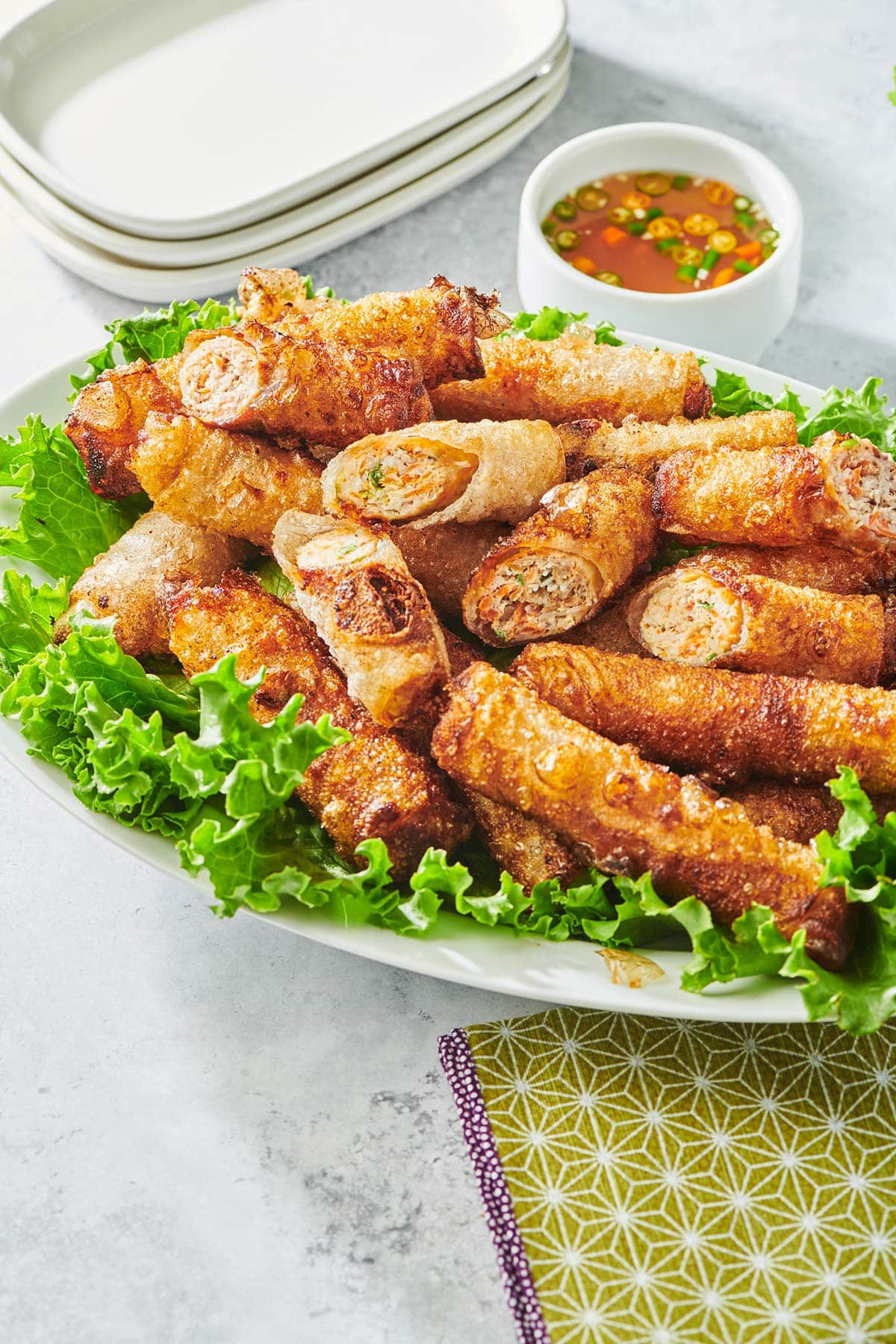
Fried Vietnamese Spring Rolls: Light and crunchy, savory and addicting, these are served wrapped in lettuce leaves with lots of fresh herbs, dipped in a fish sauce, and eaten out of hand.
What Are Vietnamese Spring Rolls?
Spring rolls are called nem ran in Hanoi and cha gio in Saigon. This recipe includes pork plus shrimp in the filling, which is very traditional. Sometimes, crab is used instead of shrimp.
In Vietnam, rice paper (banh trang) might be handmade by artisans who have passed down this food-making skill for generations. It’s a pretty detailed process involving thin layers of rice batter spread out on a cloth over a pot, then transferred to a bamboo mat to dry. They are then trimmed into perfect circles. That’s for another day — I’m happy to buy mine at well-stocked markets or Asian grocery stores (if you have an H Mart near you they always have a nice selection!).
Vietnamese Spring Roll Ingredients
Cellophane noodles and rice paper rounds can be found at well-stocked supermarkets, Asian grocery stores, or online. The other ingredients are available at any market.
For the Filling:
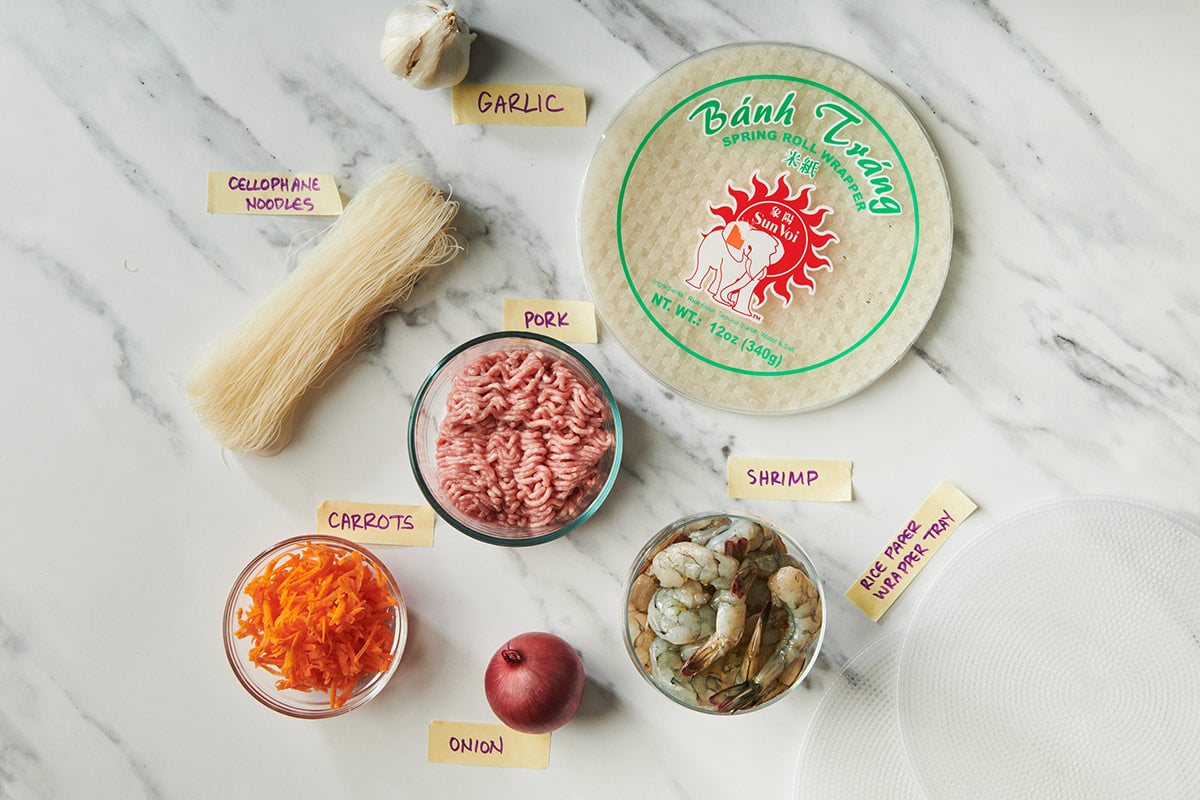
- Cellophane noodles (bean threads) – I have also used rice vermicelli in these spring rolls (which is actually what is pictured above).
- Medium shrimp – You will chop these, so save yourself some cash and buy smaller shrimp.
- Shredded carrots – Make sure they are grated, not chopped, so they blend into the filling.
- Ground pork
- Scallions – Trimmed and chopped (use both white and green parts).
- Onion and garlic – Finely mince the alliums so they blend into the filling.
- 30 (6 or 8-inch) rice paper rounds – See below for much detail on how to quickly soak the rice paper to make perfect spring rolls.
To Serve:
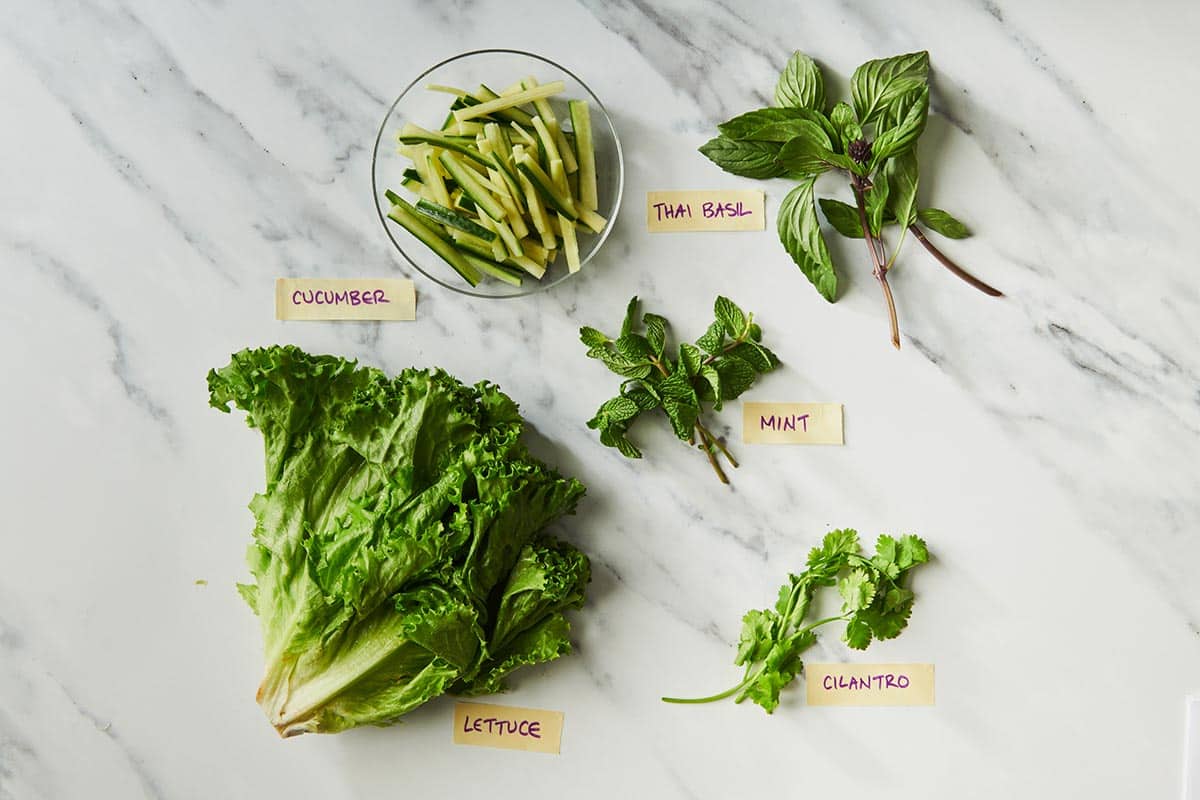
- Green leaf lettuce – For wrapping the spring rolls; keep the pieces on the larger size.
- Seedless cucumber – Cut into 4-inch sections, halved, seeded, and julienned (sliced into thin matchsticks) lengthwise.
- Diced tomatoes – These are optional.
- Fresh cilantro, Asian basil, and mint – (any or all)
- Nuac Mam for serving
For the Nuac Mam Sauce
This is the quintessential dipping sauce, starring fish sauce. It’s served with all sorts of Vietnamese foods, spring rolls in particular, and the recipe is below.
- Sugar – Sugar is used in Vietnamese cooking to balance out the more pungent flavors.
- Shredded carrot – Adds nice color.
- Kosher salt
- Fresh lime juice
- Fish sauce – This is the national condiment of Vietnam, used in so many dishes and in pretty much every dipping sauce. It’s funky and salty and a key ingredient in all Southeast Asian cooking.
- Chili pepper – Use a Thai chili pepper if you can, or any small hot pepper will do. Remove the seeds if you want to soften the heat level.
How to Make Vietnamese Spring Rolls
Read through these directions before starting, be prepared to mess up a roll or two as you get the hang of it, and be patient! Rolling spring rolls is so much fun once you get the hang of it.
- Soak the noodles: Soak the cellophane noodles in hot water for 30 minutes until soft. Drain, then cut the noodles into 1-inch pieces.
- Make the filling: Meanwhile, place the shrimp in the food processor and pulse to chop (you can also finely chop the shrimp by hand). Turn the shrimp into a bowl and add the carrots, pork, scallions, onion, garlic, and drained cellophane noodles. Mix well to combine (your hands are the best tools for this – you want the filling to be completely blended).
- Make the sugar-water wash: Heat the water and the sugar in a small saucepot over medium heat until the sugar is dissolved. Set aside to cool.
- Dip the rice papers: Fill a pie plate or another shallow pan with warm water. Dip the rice papers one at a time into the warm water for about 5 seconds, then remove. The rice paper will continue to absorb the liquid a bit while it sits and become pliable.
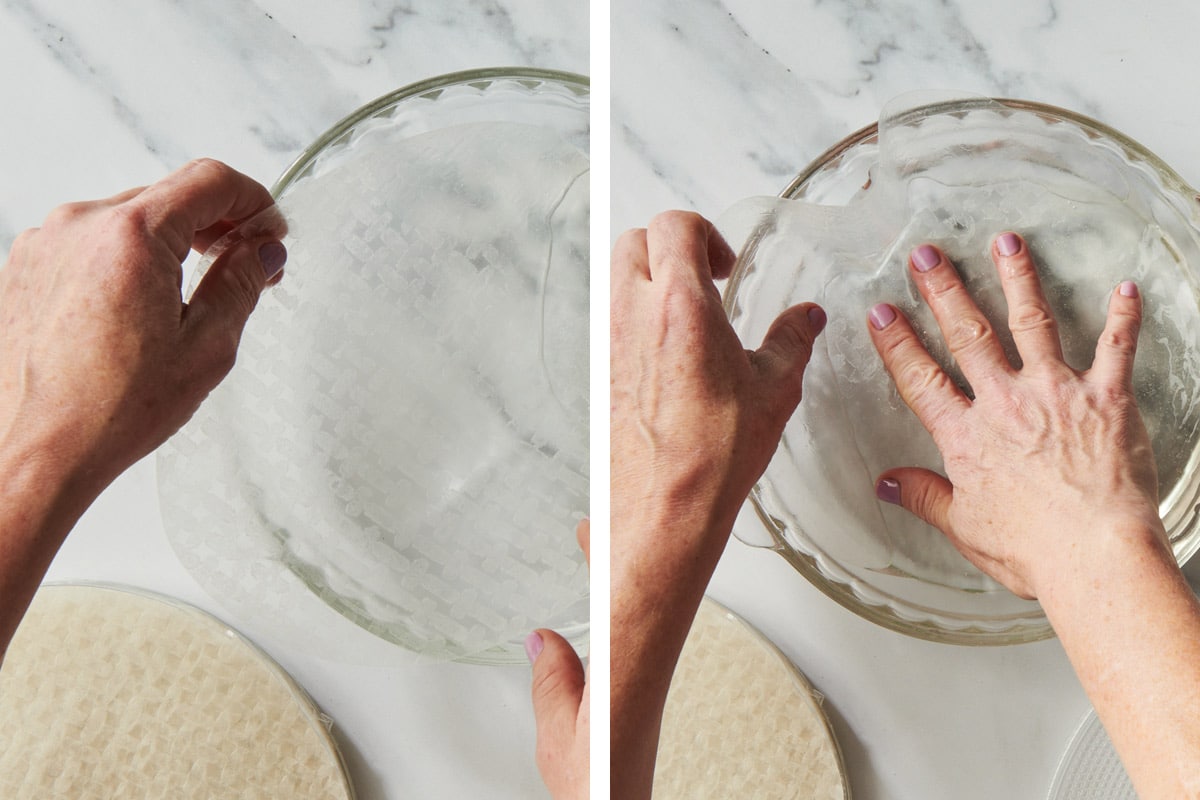
- Fill in spring rolls: Place the rice paper on a clean surface and scoop 1 heaping tablespoon filling onto the bottom third of the circle.
- Start rolling the spring rolls: Use your fingers to lift the bottom edge over the filling.
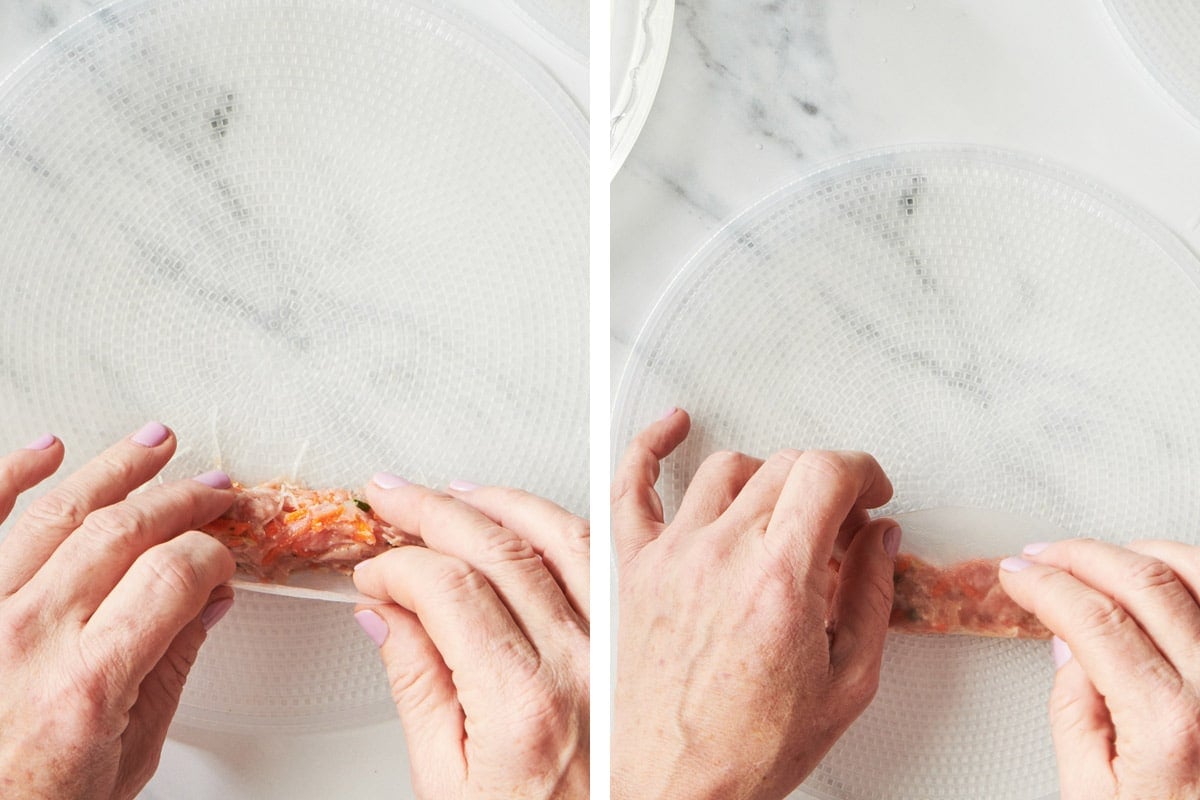
- Fold in both sides.
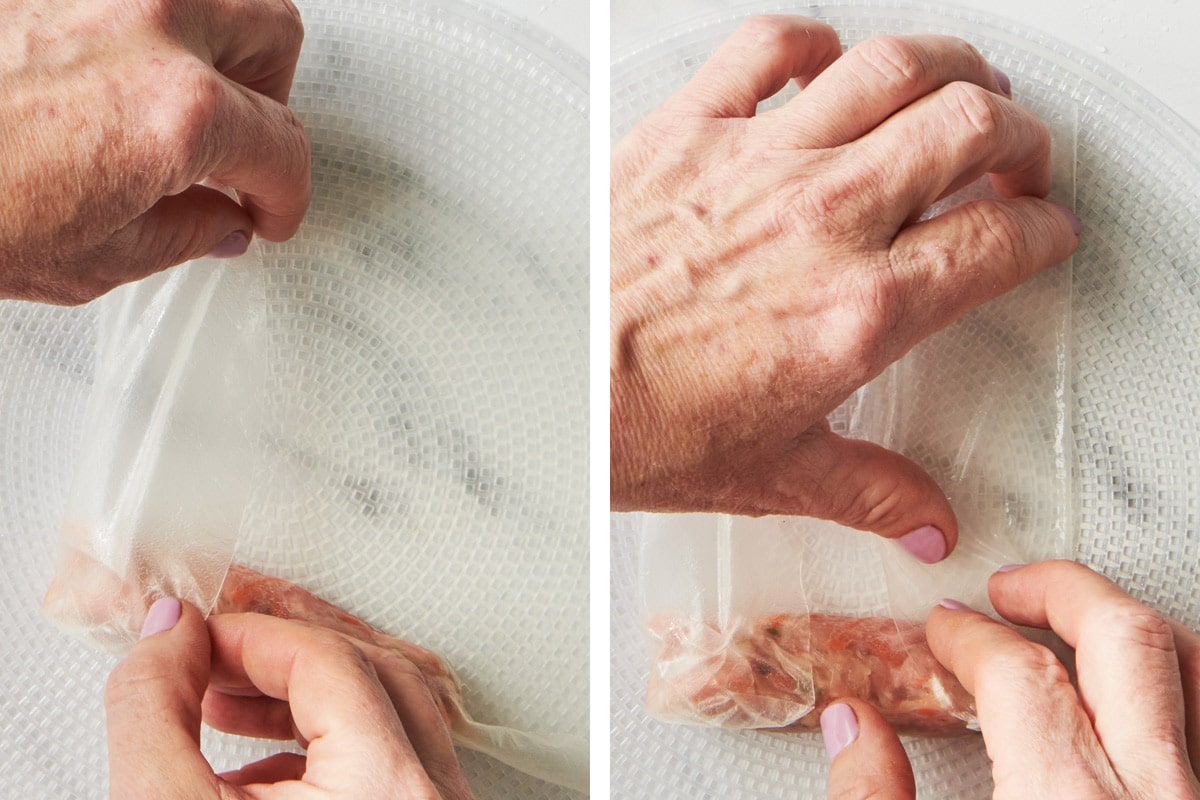
- Finish rolling: Roll into a small cylinder about 3/4 inch wide and 2 to 3 inches long. Place seam side down to set up (the rice paper will firm up again and seal itself). Don’t stack the rolls.
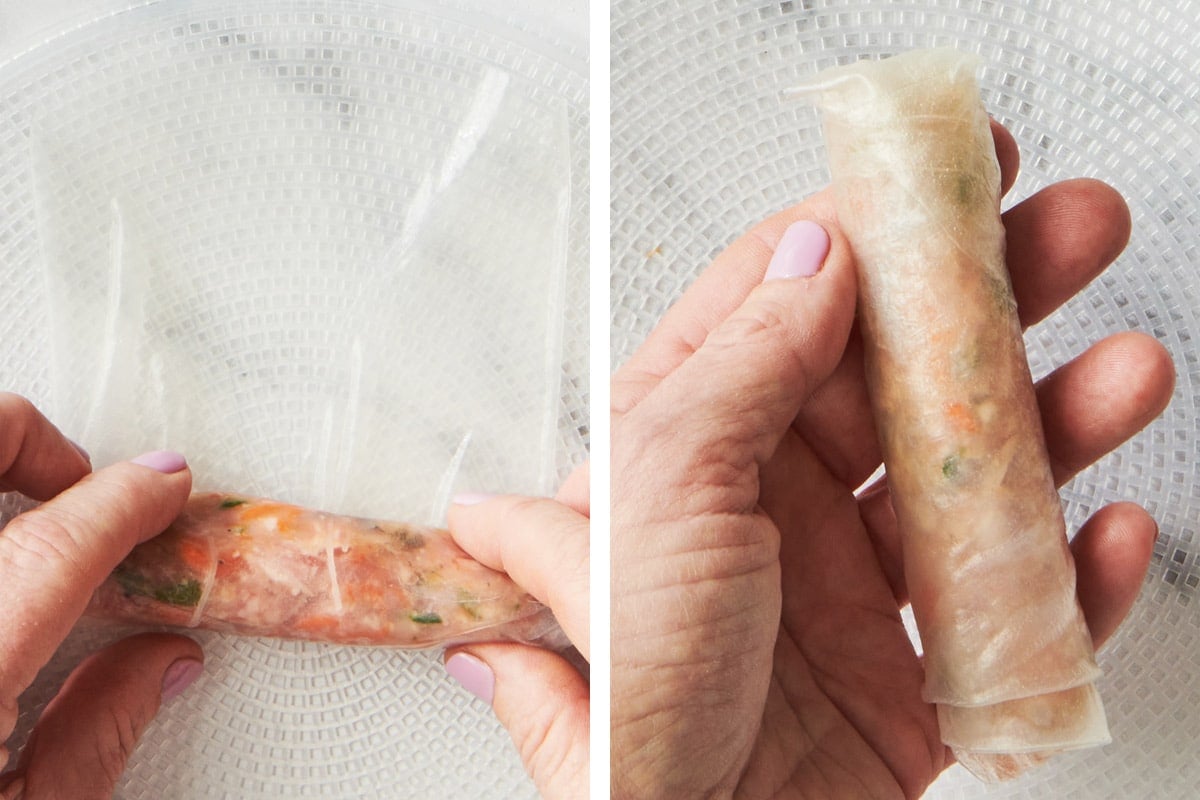
- Roll more spring rolls: Continue until all of the rolls are formed. Keep refreshing the water so it stays warm. Brush the rolls with the cooled sugar water on all sides, and let dry.
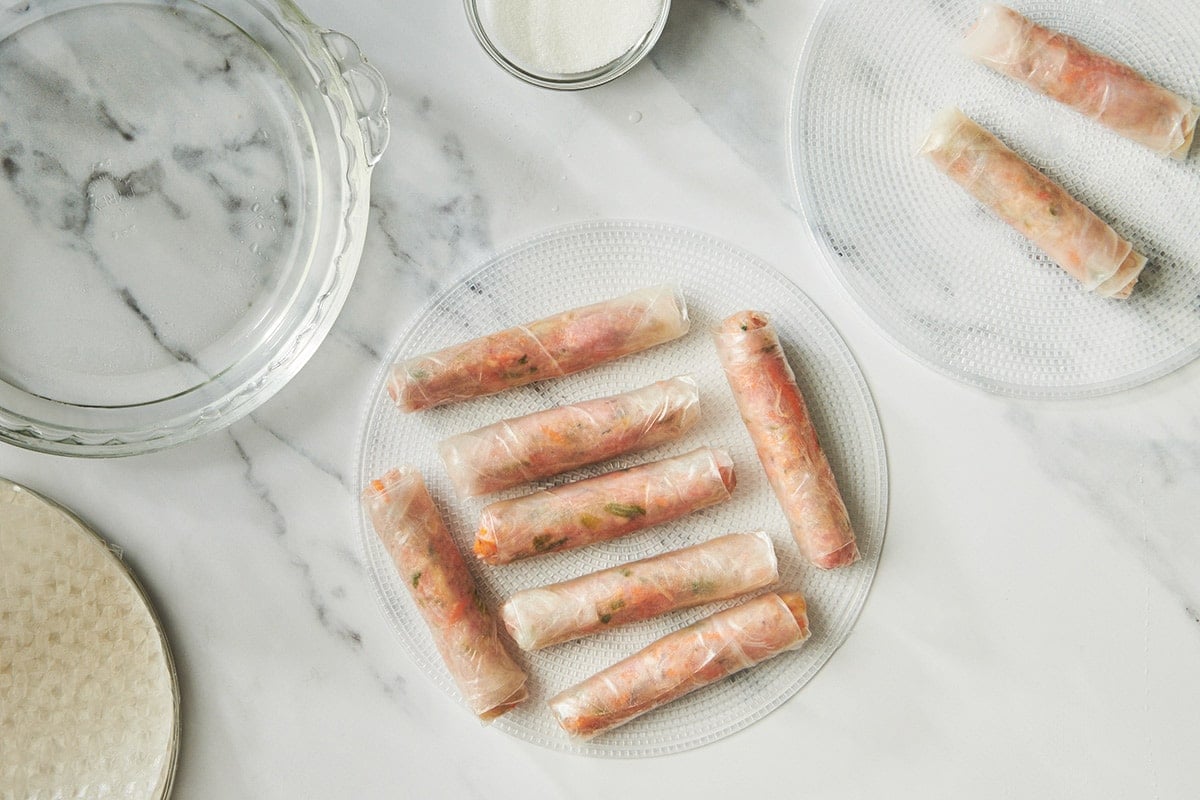
- Heat the oil: Line a clean surface with paper towels. Pour about 1 1/2 inches of oil into a large deep skillet or saucepan and heat to 350 degrees F.
- Fry the spring rolls: You can also test by adding one of the rolls: if the oil bubbles around the edges of the spring roll when it’s added, the oil is ready — it should not bubble too vigorously, though. Add the rolls in batches without crowding them and cook until golden on all sides, about 6 minutes in all, flipping them gently as you fry them. Remove with a slotted spoon and drain on the paper towels.
- Serve: Serve immediately with the dipping sauce and the garnishes. Place a warm spring roll into a lettuce leaf with a few fresh herb leaves, a slice or two of cucumber, and a bit of tomato, wrap it up, then dip into the sauce.
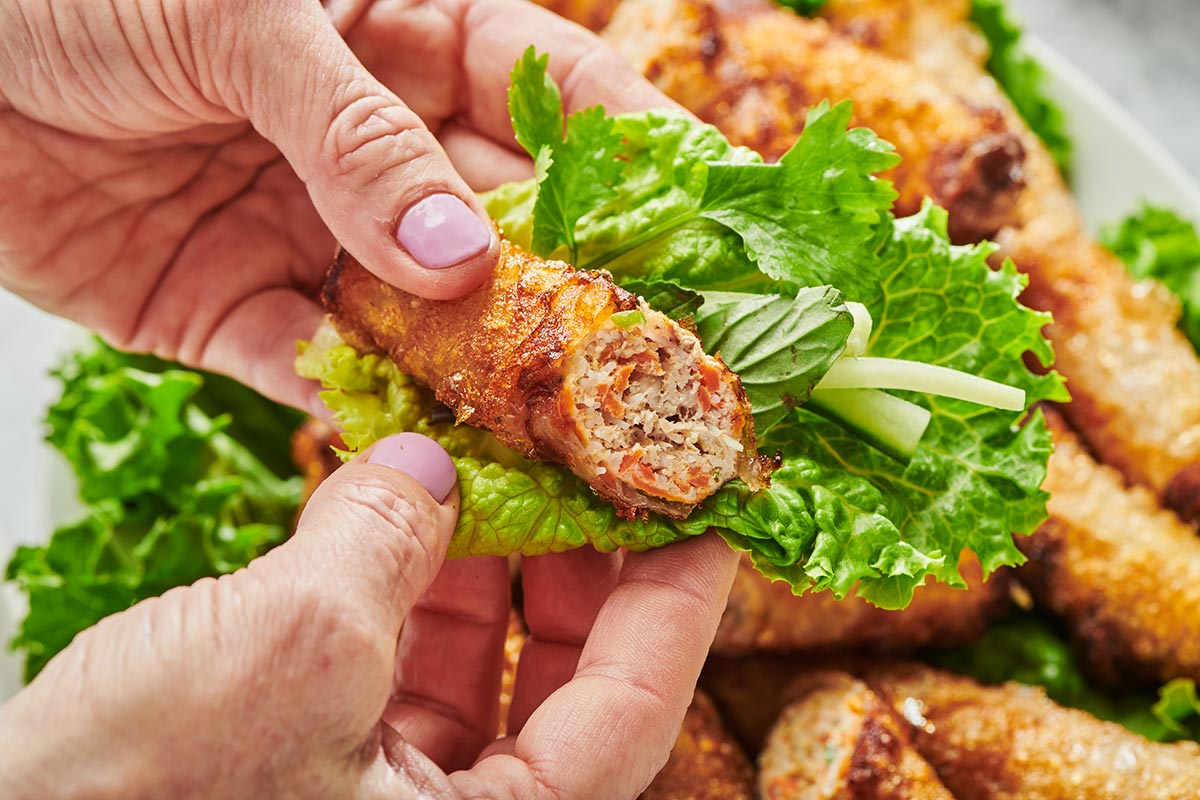
Tips for Making Perfectly Fried Spring Rolls
- Make sure to mince the filling ingredients so they blend together. Coarsely chopped pieces of vegetables or shrimp will make it harder to roll up the filling in the rice paper.
- Don’t puree the shrimp into a paste; you want it to have some texture.
- Make the filling at least a couple of hours ahead of time so the flavors and ingredients blend. Keep it in the fridge.
- You can use any sized shrimp you like, but since they will be chopped, it makes sense to buy a smaller size, which is almost always less expensive.
- Don’t overstuff the spring rolls, or they might be hard to roll up or burst apart in the hot oil.
- Baba says to use mesh plastic trays to lay your dipped rice papers on. This is one of the best tricks I learned from Baba! These are made specifically for this purpose, and they are affordable and reusable. I highly recommend them if you are going to make these spring rolls. After dipping the rice paper in the warm water, you lay each one on one of the mesh trays. These prevent the rice paper from sticking to the counter and make it easier to roll. They also allow the rice paper to stay moist but not get too soaked or sticky as you fill and roll them.
- While the rolls are best right from the frying pan, they are also just plain delicious at room temp. Baba’s younger daughter, Lovey, eats them right out of the fridge.
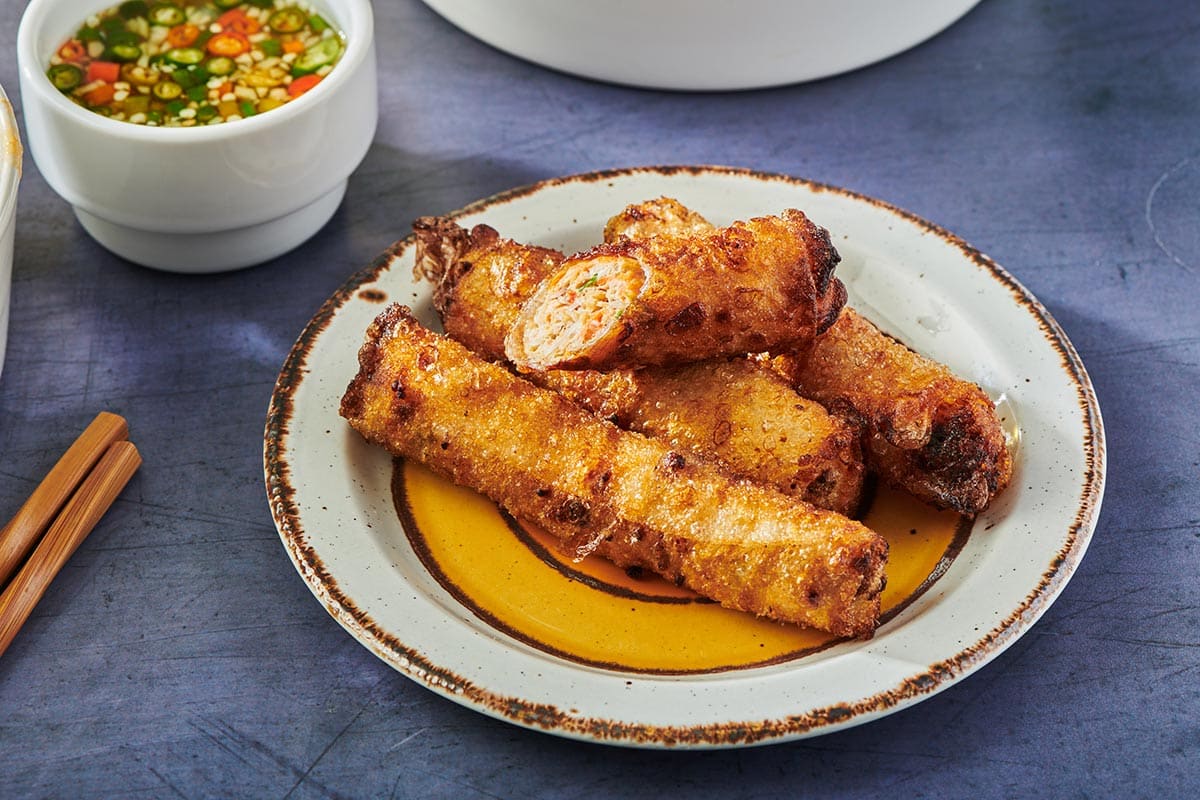
Solutions for Common Spring Roll Problems
The oil might be too hot, or the spring rolls too wet. Let the spring rolls dry a bit after brushing them with the sugar-water solution before adding them to the oil to prevent bubbling. Bigger bubbles can be popped with a chopstick.
Make sure the oil is deep enough to cover the rolls, which will make them easier to flip.
The heat is too high. Reduce the heat to allow the spring rolls to brown slowly.
Rice paper doesn’t brown as quickly as wheat-based wrappers. You will want to let the spring rolls cook for at least 6 minutes to achieve a golden-brown color. And, make sure to brush the rolls with the water-sugar solution before frying because it encourages browning. There is very little sugar, and the rolls won’t taste sweet; it will just enhance the golden color. Again, let them dry before adding them to the oil to reduce splattering and bubbling.
If your rice paper tears, it might be too wet or too dry. Just moisten the rice paper enough so that it becomes pliable. Don’t let it sit in the water. The rice paper will continue to soften and absorb water as it sits.
When you add the rolls, add them one at a time, and don’t let them touch or crowd them, or they will stick together. Turn each spring roll in the oil as you add it, and try to keep them apart for the first couple of minutes, until they start to firm up on the outside, which will prevent them from sticking to one another.
Mini Spring Rolls Variation
Make smaller spring rolls by cutting the rice paper circles into 4 triangles, after you moisten the rice paper. Make sure to use 8-inch circles. Or, you can buy smaller triangle-shaped rice papers made just for this purpose. These are great for cocktail parties!
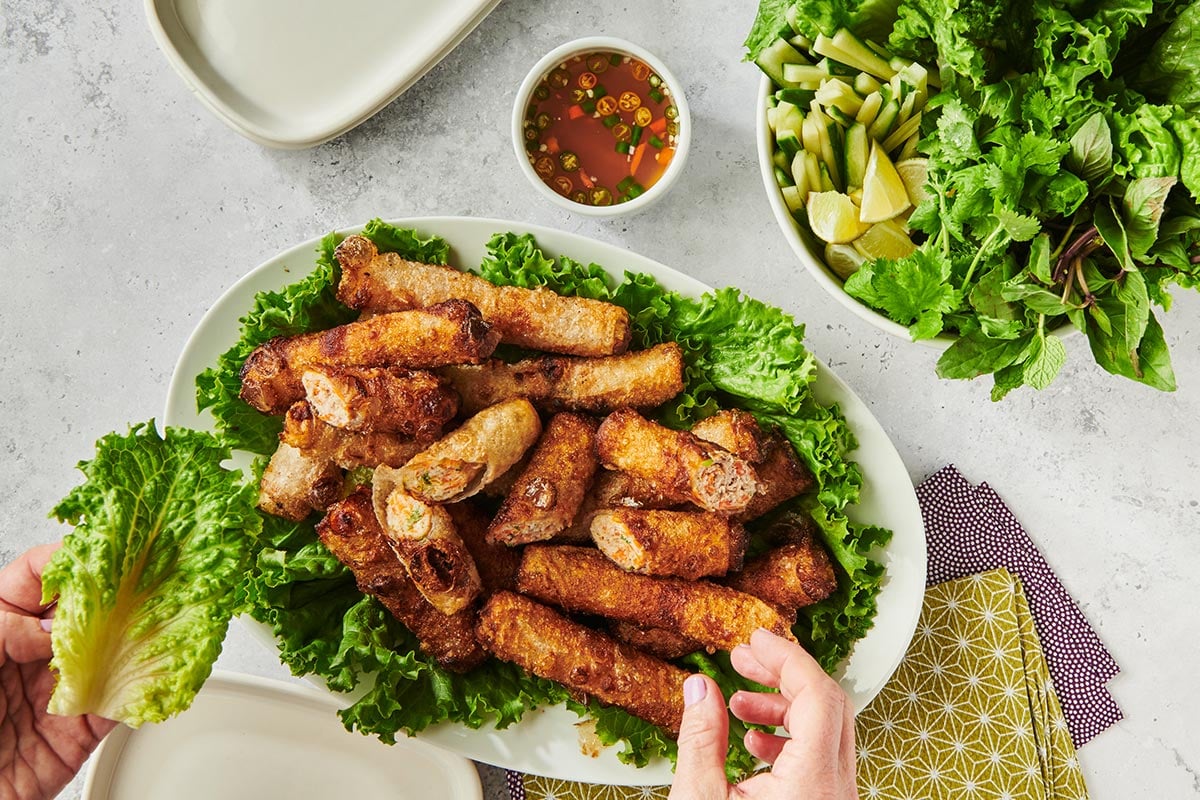
Storage and Reheating
You can assemble the spring rolls and store them in a single layer in a container in the refrigerator for up to a day before frying. You can layer the rolls with parchment paper separating each layer.
Store leftover fried spring rolls in the fridge for up to 3 days. Reheat them in a preheated 350 oven on a baking sheet for 8 to 10 minutes until heated through.
Freezing Spring Rolls: After rolling the spring rolls and brushing them with the sugar water mixture, let them dry completely, and then layer them in a freezer-proof container with parchment paper between each layer. Tuck plastic wrap around the rolls, then cover the container and freeze the rolls for up to 4 months. Defrost in the fridge for 24 hours before frying.
What to Serve With Vietnamese Spring Rolls
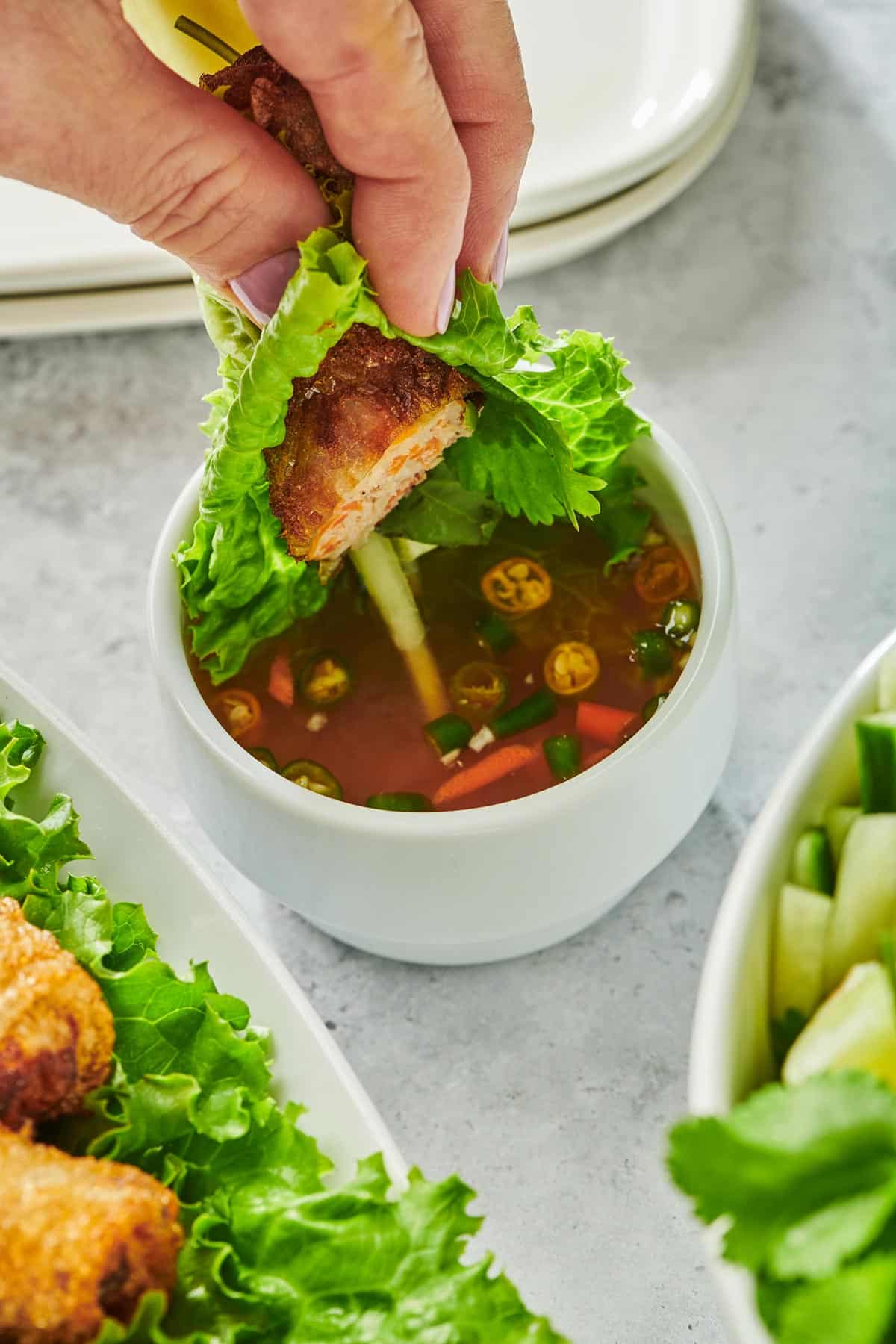
More Asian Recipes
- Shiitake Mushroom and Spinach Dumplings
- Vietnamese Cucumber Salad
- Hoisin Shrimp
- Vegan Asian Napa Cabbage Slaw
- Vegan Vietnamese Mango Salad
- Pineapple Shrimp Fried Rice
Pin this now to find it later
Pin It
Vietnamese Spring Rolls
Ingredients
For Nuoc Mam (Vietnamese Dipping Sauce)
- ¼ cup water
- 3 tablespoons sugar
- ½ cup shredded carrot
- ½ teaspoon kosher salt
- 2 tablespoons fresh lime juice
- 3 tablespoons fish sauce
- 1 Thai chili pepper (sliced; see Note)
For the Filling:
- 2 ounces cellophane noodles (bean threads)
- 1 pound medium shrimp (peeled and deveined; see Note)
- 1 ½ cups shredded carrots
- 1 pound ground pork
- 8 scallions (trimmed and finely chopped; white and green parts)
- 1 small onion (finely chopped)
- 1 clove garlic (finely minced)
- ½ teaspoon kosher salt
- freshly ground black pepper (to taste)
- ¼ cup water
- 2 tablespoons sugar
- 30 (6 or 8-inch) rice paper rounds
- Peanut or vegetable oil (for frying)
For Serving:
- Green leaf lettuce
- 1 seedless cucumber (cut into 4-inch sections, halved, seeded, and julienned lengthwise)
- 2 tomatoes (diced; optional)
- Sprigs of fresh cilantro, Asian basil, and mint (any or all)
Instructions
Make the Nuoc Mam (Vietnamese Dipping Sauce)
- Heat 1/4 cup water and the sugar in a small saucepot until the sugar is dissolved. Set aside to cool.
- Meanwhile, place the carrot in a colander or strainer and sprinkle with the salt. Toss and let sit for 10 minutes. Rinse and pat dry with a clean dish towel or paper towels.
- Combine the sugar syrup, carrots, lime juice, fish sauce, and chili sauce in a small bowl.
Make the Spring Rolls:
- Soak the cellophane noodles in hot water for 30 minutes until soft. Drain, then cut the noodles into 1-inch pieces.
- Meanwhile, place the shrimp in the food processor and pulse to chop (you can also finely chop the shrimp by hand). Turn the shrimp into a bowl and add the carrots, pork, scallions, onion, garlic, and drained cellophane noodles. Season with salt and pepper and mix well to combine (your hands are the best tools for this – you want the filling to be completely blended).
- Heat the water and the sugar in a small saucepot over medium heat until the sugar is dissolved. Set aside to cool.
- Fill a pie plate or another shallow pan with warm water. Dip the rice papers one at a time into the warm water for about 5 seconds, then remove. The rice paper will continue to absorb the liquid a bit while it sits and become more pliable.
- Place the rice paper on a clean surface and scoop 1 heaping tablespoon filling onto the bottom third of the circle. Use your fingers to lift the bottom edge over the filling, then fold in both sides.
- Roll into a small cylinder about 3/4 inch wide and 2 to 3 inches long. Place seam side down to set up (the rice paper will firm up again and seal itself). Brush the rolls with the cooled sugar water on all sides, and let dry.
- Don’t stack the rolls. Continue until all of the rolls are formed. Keep refreshing the water so it stays warm.
- Line a clean surface with paper towels. Pour about 1 1/2 inches of oil into a large deep skillet or saucepan and heat to 350 F.
- You can also test by adding one of the rolls: if the oil bubbles around the edges of the spring roll when it’s added, the oil is ready — it should not bubble too vigorously, though. Add the rolls in batches without crowding them and cook until golden on all sides, about 6 minutes in all, flipping them gently as you fry them. Remove with a slotted spoon and drain on the paper towels.
- Serve immediately with the dipping sauce and garnishes. Place a warm spring roll into a lettuce leaf with a few fresh herb leaves, a slice or two of cucumber, and a bit of tomato, wrap it up, then dip into the sauce.
Notes
- When making the sauce, you can also use 1 tablespoon chili sauce, such as Sriracha sauce, instead of the chili pepper, though your sauce will be tinted an orang-ey color.
- You can use any size of shrimp you like. Since they will be chopped, it makes sense to buy a smaller size, which is almost always less expensive.
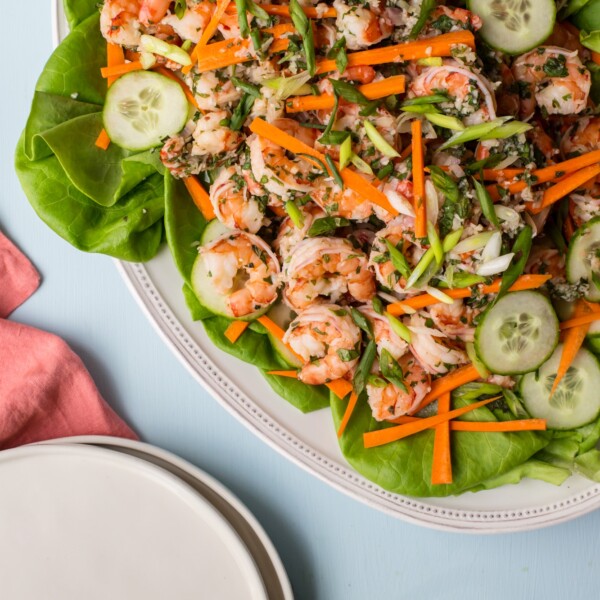
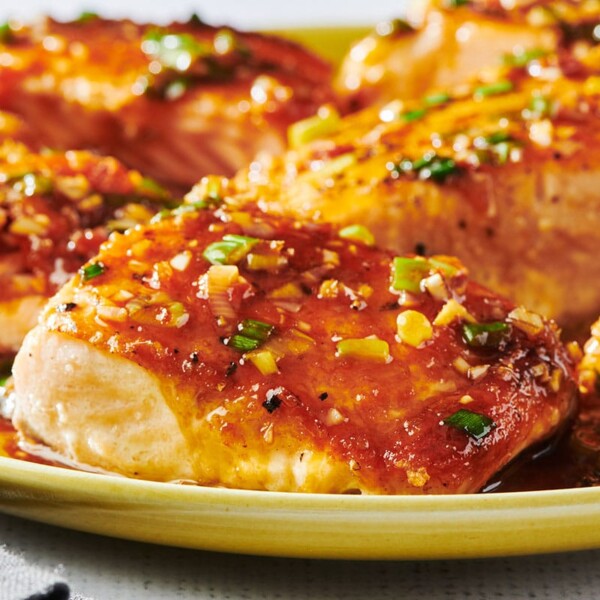
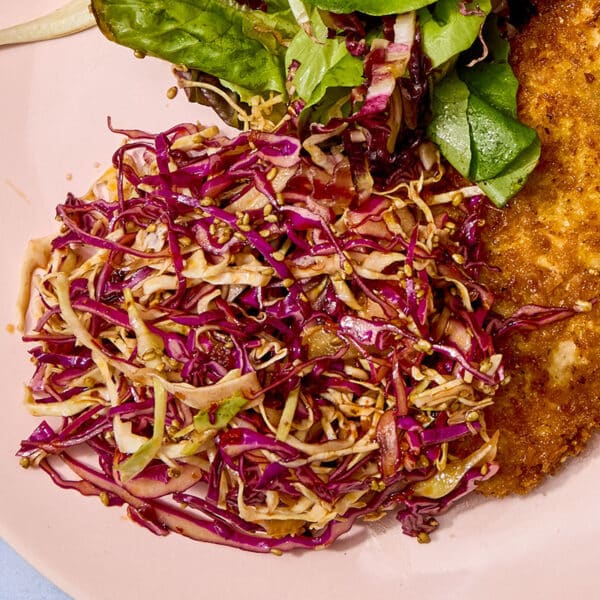
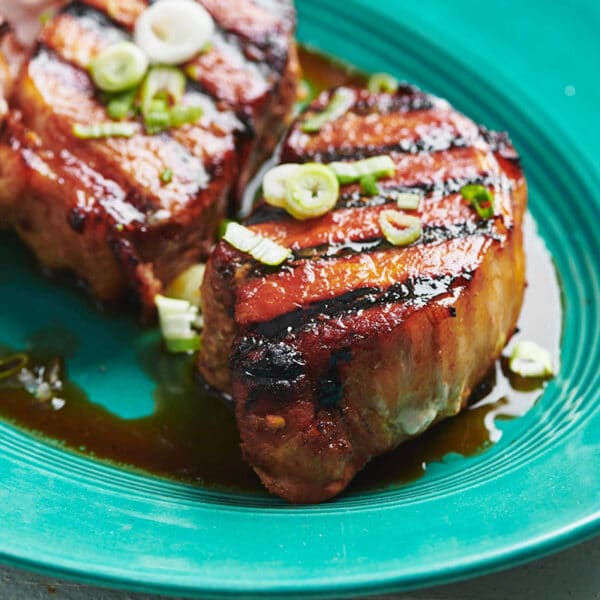
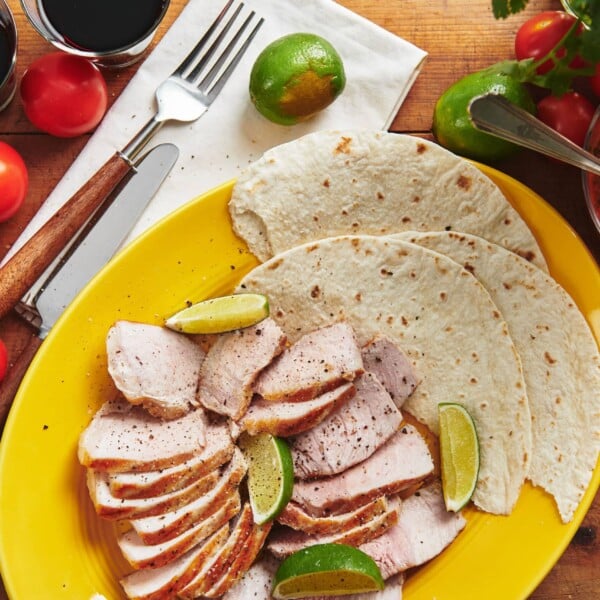
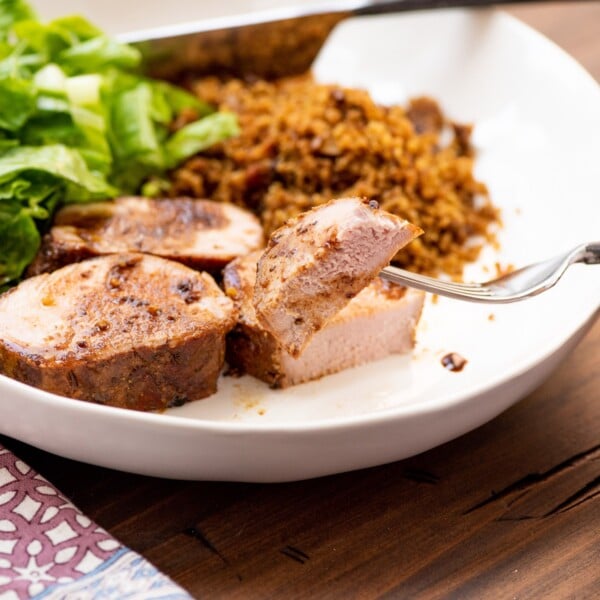
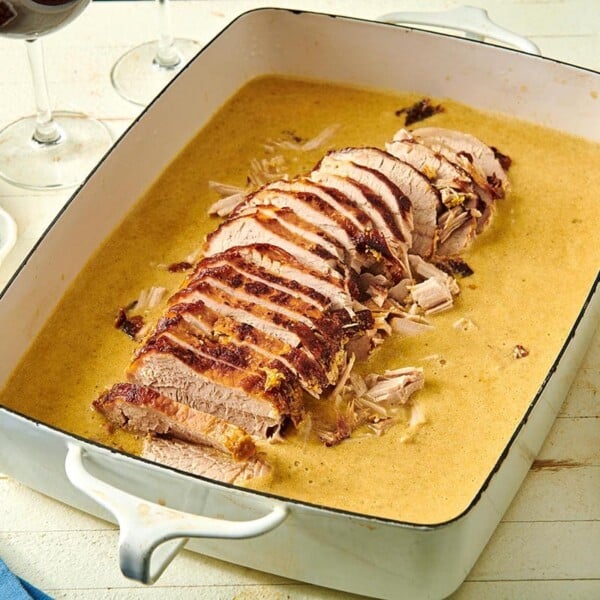









These rolls tasted good, however, had some problems with frying the rolls. The bubbles from the rice paper will form even at lower temperatures, I think from reading other recipes. The best way to handle that is to have a chopstick on hand to pop the larger bubbles as soon as they form, this will make it easier to rotate the roll while cooking. My oil temp hovered around 340°. Tasted good, but refrying rolls after they rest for a few minutes might not be a bad idea.
So delicious! A great, easy to follow recipe.
These spring rolls are so delicious! Love making them.
Baba will be proud!!